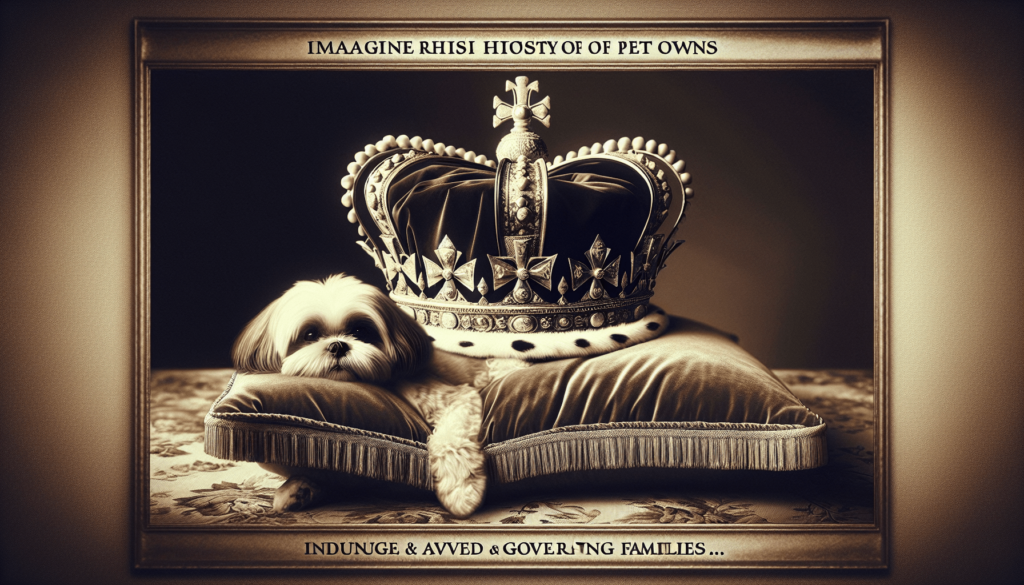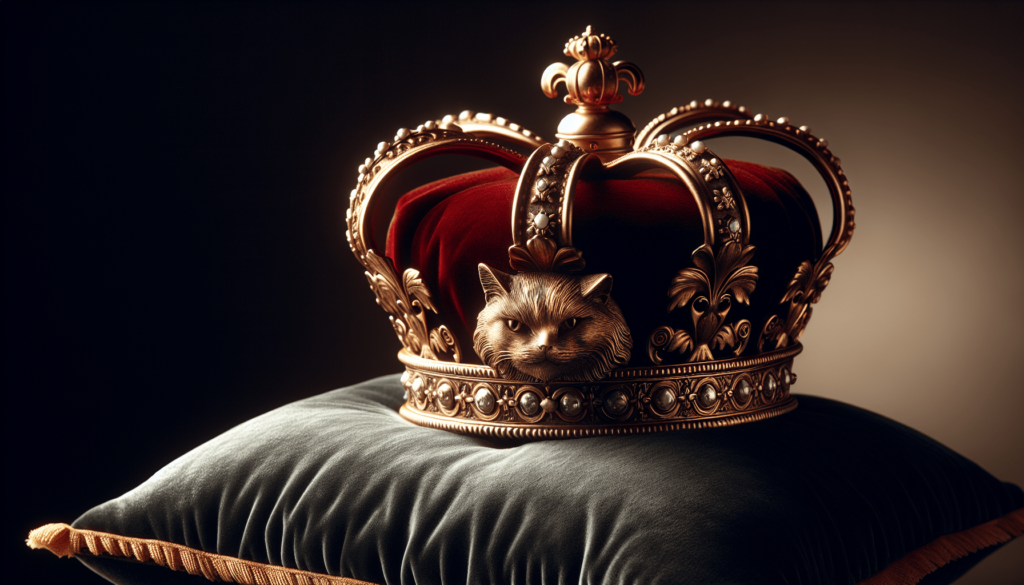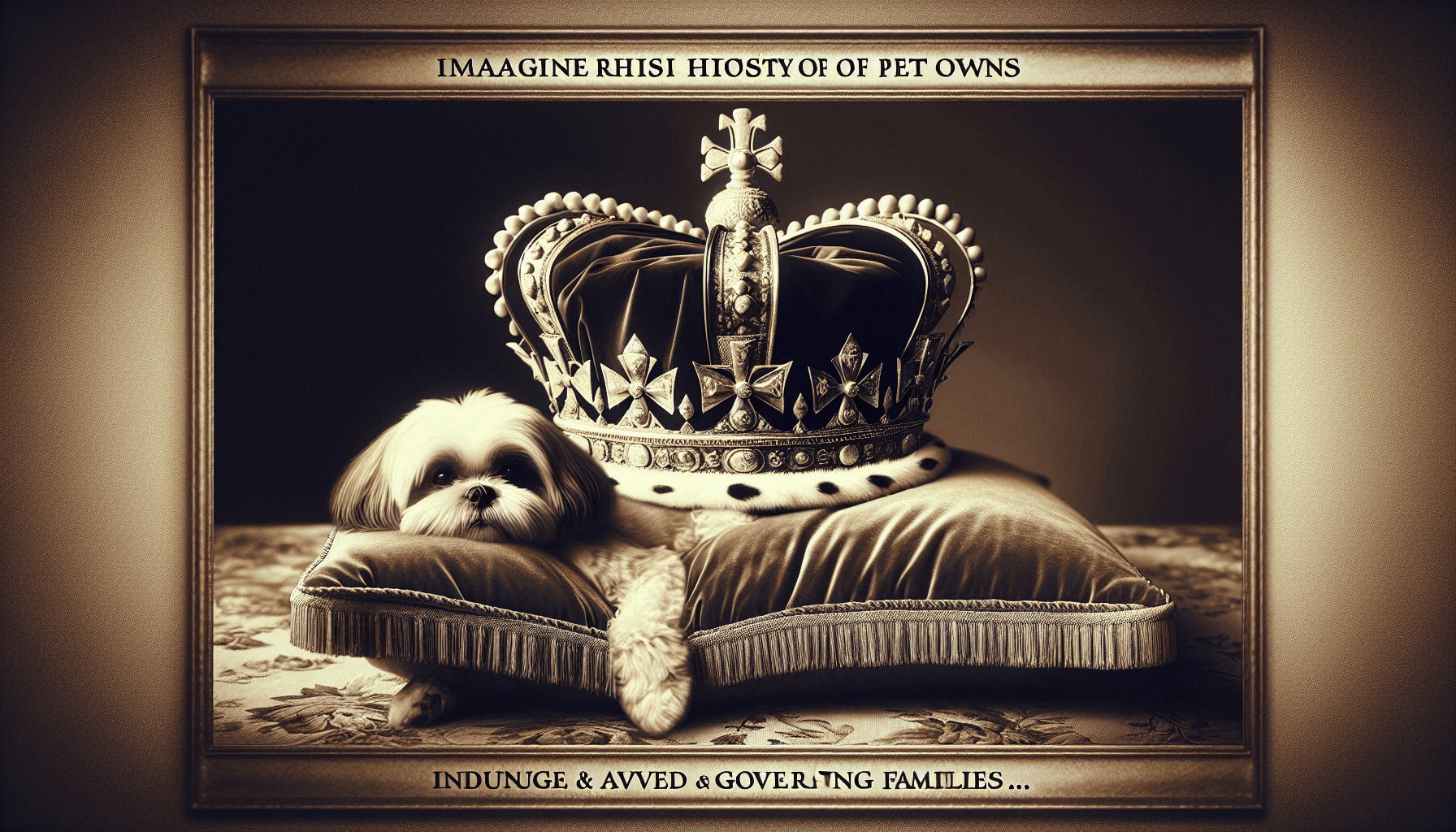Have you ever wondered about the role pets have played in royal families throughout history? Pets have long been companions to rulers, princes, and princesses in monarchies around the world. In this article, we will delve into the fascinating history of pets in royal families, from the ancient civilizations to modern times. Join us as we explore the unique bond between royals and their beloved animal companions.
Pets in Ancient Civilizations
Pets have been a part of human history for thousands of years, and royal families were no exception to this trend. In ancient civilizations such as Egypt, Mesopotamia, and China, pets were valued for their companionship, protection, and even religious significance. For example, the ancient Egyptians revered cats as sacred animals and believed they brought good luck to their owners. In Mesopotamia, dogs were revered for their loyalty and were often depicted in royal art and literature.
In these ancient civilizations, pets played a crucial role in the lives of royals, providing both companionship and companionship. The bond between pets and rulers was undoubtedly strong, as evidenced by the elaborate burials of animals alongside their royal owners. From cats and dogs to birds and exotic animals, pets were an integral part of royal life in ancient times.
Egyptian Pharaohs and Their Animal Companions
The ancient Egyptian pharaohs were known for their love of animals, especially cats. Cats were considered sacred animals and were even worshipped as manifestations of the goddess Bastet. Pharaohs such as Rameses II and Tutankhamun were depicted with their beloved feline companions in art and sculpture, highlighting the important role of pets in royal life.
Beyond cats, Egyptian pharaohs also kept other exotic animals as pets, including lions, monkeys, and birds. These animals were often symbols of power and prestige, showcasing the wealth and status of the royal family. The bond between the pharaohs and their pets was so strong that some animals were mummified and buried alongside their royal owners, ensuring their companionship in the afterlife.
Medieval Europe: The Age of Chivalry and Pet Keeping
During the Middle Ages in Europe, pets continued to be important companions to royalty and nobility. Dogs were the most common pets in medieval times, serving as hunting companions, guards, and loyal friends. Kings and queens often kept hunting dogs such as greyhounds, beagles, and spaniels, training them for the chase and taking them on royal hunts.
In addition to dogs, medieval royals also kept exotic pets such as falcons, parrots, and even monkeys. These animals were symbols of wealth and power, showcasing the royal family’s status and prestige. For example, falconry was a popular sport among the nobility, with kings and queens training their birds of prey for hunting and entertainment.
The Tudors and Their Menagerie of Pets
The Tudor dynasty in England was known for its love of pets, with monarchs such as Henry VIII and Elizabeth I keeping a diverse array of animals in their royal households. Henry VIII, known for his lavish lifestyle and extravagant tastes, had a menagerie of pets that included dogs, cats, monkeys, and even a pet lion.
Elizabeth I, Henry VIII’s daughter, was particularly fond of her animal companions and was known to have a soft spot for dogs. She kept several breeds of dogs in her royal court, including spaniels and greyhounds, which accompanied her on royal outings and hunts. Elizabeth’s love of animals was well-documented, with many portraits depicting her with her beloved pets by her side.

The Age of Enlightenment: Pets as Companions and Symbols of Power
The Age of Enlightenment in the 18th century saw a shift in the role of pets in royal families, from symbols of power to cherished companions. Monarchs such as Louis XVI of France and Catherine the Great of Russia kept pets not only for their entertainment value but also for their emotional support and companionship.
Dogs were the most popular pets among Enlightenment-era royals, with breeds such as poodles, spaniels, and terriers being favored for their loyalty and intelligence. Cats also remained popular pets among royals, providing companionship and comfort in the solitude of palace life. Exotic animals such as parrots, monkeys, and even bears were kept as symbols of wealth and prestige, highlighting the extravagant lifestyles of the royal families.
Louis XVI and Marie Antoinette: The Pet-Loving Monarchs
Louis XVI of France and his wife, Marie Antoinette, were known for their love of pets, especially dogs. The couple kept a menagerie of pets in their royal palaces, including pugs, terriers, and hunting dogs. These animals were not only companions but also symbols of the royal family’s power and status.
Marie Antoinette, in particular, had a fondness for pets and often surrounded herself with animals in her private chambers. She even had a special dog breeding program in place to create new breeds of dogs for her royal household. Despite the turmoil and upheaval of the French Revolution, the love of pets remained a constant in the lives of Louis XVI and Marie Antoinette until their tragic end.
The Victorian Era: Pets as Status Symbols and Family Companions
The Victorian era in the 19th century saw a resurgence in the popularity of pets among royal families, with pets becoming not only symbols of status but also cherished members of the royal household. Queen Victoria of England, known for her love of animals, had a menagerie of pets that included dogs, cats, birds, and even exotic animals from around the world.
Dogs played a central role in the lives of Victorian royals, with breeds such as pugs, King Charles spaniels, and Great Danes being popular choices for aristocrats and monarchs alike. Cats also remained popular pets among the elite, providing companionship and comfort in the opulence of royal life. Exotic animals such as parrots, monkeys, and even kangaroos were kept as novelties and symbols of the empire’s reach.
Queen Victoria and Her Beloved Pets
Queen Victoria of England was a passionate animal lover and had a special bond with her pets throughout her reign. She kept a wide variety of animals in her royal households, including dogs, cats, birds, and even a pet parrot that she taught to speak. Victoria’s love of animals was well-known, with many paintings and photographs depicting her surrounded by her beloved pets.
One of Victoria’s most famous pets was her beloved dog, Dash, a King Charles spaniel who accompanied her on long walks and carriage rides. Dash was a constant companion to the queen and was known for his loyal and affectionate nature. Victoria’s pets brought her great joy and comfort during times of loneliness and sorrow, highlighting the important role pets played in the lives of royals during the Victorian era.

Modern Times: Pets as Family Members and Social Media Stars
In the modern era, pets have become integral members of royal families, providing companionship, comfort, and even entertainment to monarchs and their descendants. From corgis to labradors, cats to horses, royal pets continue to hold a special place in the hearts of royalty around the world, serving as beloved companions and loyal friends to kings, queens, princes, and princesses.
With the rise of social media, royal pets have become stars in their own right, with dedicated accounts and fan followings on platforms such as Instagram and Twitter. From adorable photoshoots to heartwarming videos, royal pets capture the hearts of millions of followers worldwide, showcasing the unique bond between royals and their furry friends.
Queen Elizabeth II and her Corgis
Queen Elizabeth II of England is perhaps the most famous royal pet owner of modern times, known for her love of corgis. Throughout her reign, Queen Elizabeth has owned over 30 corgis, breeding them at her royal estates and keeping them as cherished companions. Her corgis, with names such as Willow, Holly, and Monty, have become iconic symbols of the queen’s reign and have captured the hearts of the British people.
The queen’s corgis have accompanied her on official engagements, royal tours, and walks around her royal estates, bringing joy and laughter to the royal household. Their antics and mischievous behavior have been well-documented in the media, making them beloved figures in the world of royal pets. Queen Elizabeth’s bond with her corgis is a testament to the enduring relationship between royals and their animal companions in modern times.
Conclusion: The Enduring Bond Between Royals and Their Pets
Throughout history, pets have played a crucial role in the lives of royal families, providing companionship, comfort, and even status symbols to rulers and monarchs around the world. From ancient civilizations to modern times, pets have been valued members of royal households, sharing in the joys and sorrows of their royal owners.
The bond between royals and their pets is a testament to the enduring power of friendship and loyalty, transcending time and tradition. Whether cats, dogs, birds, or exotic animals, royal pets have enriched the lives of monarchs and brought joy to generations of royal families. As we reflect on the history of pets in royal households, we are reminded of the special connection between humans and animals, a bond that knows no boundaries or limitations.

